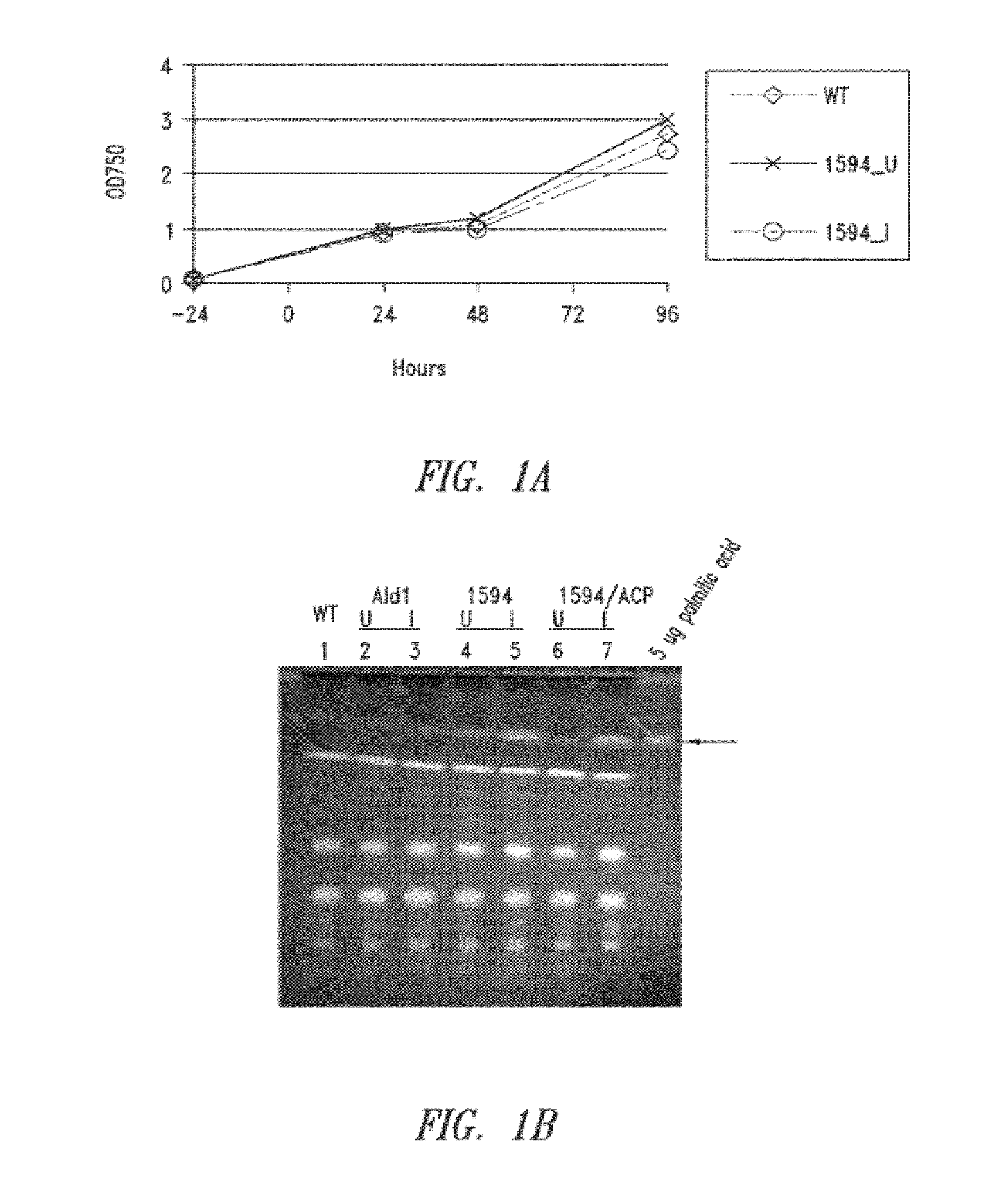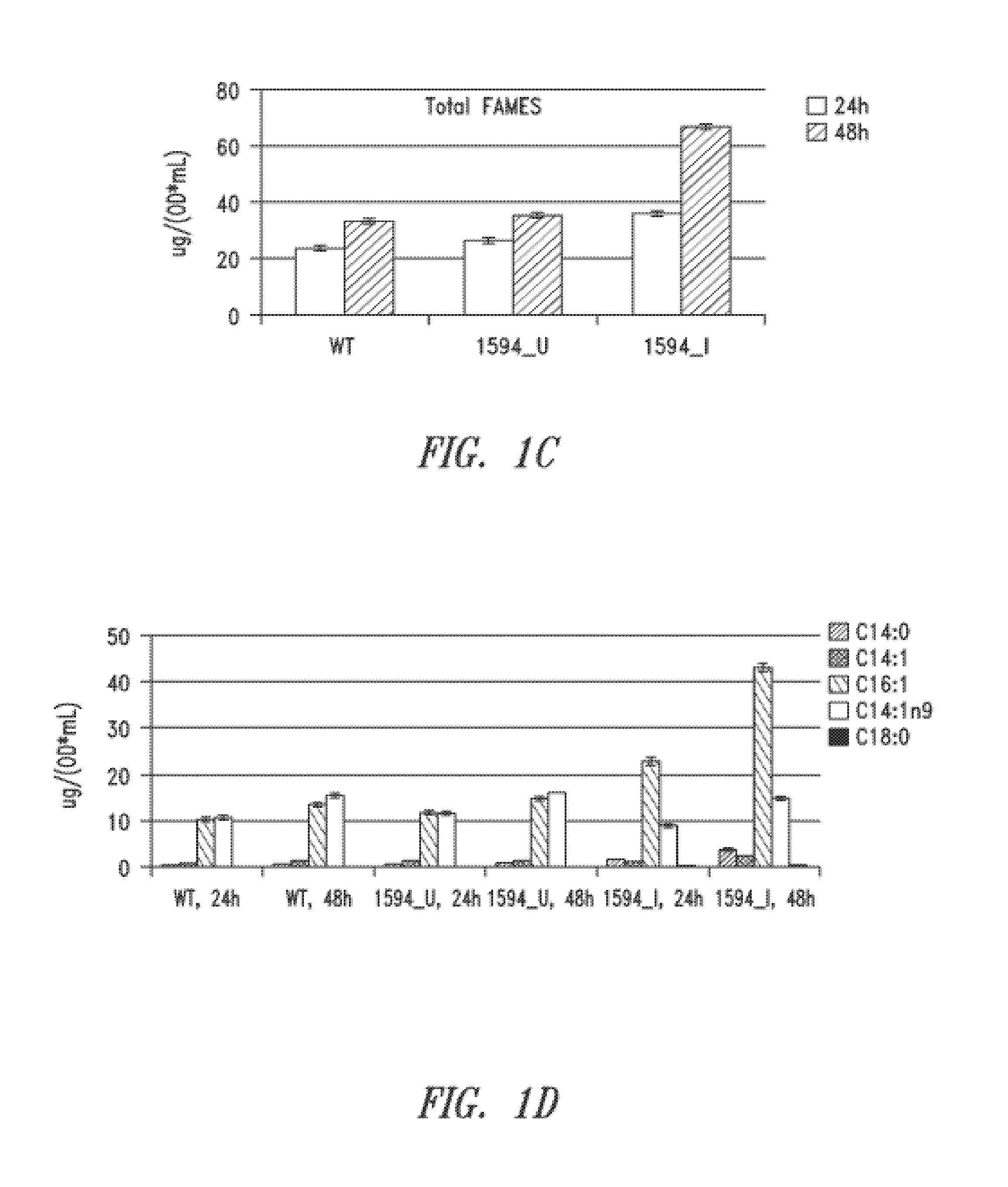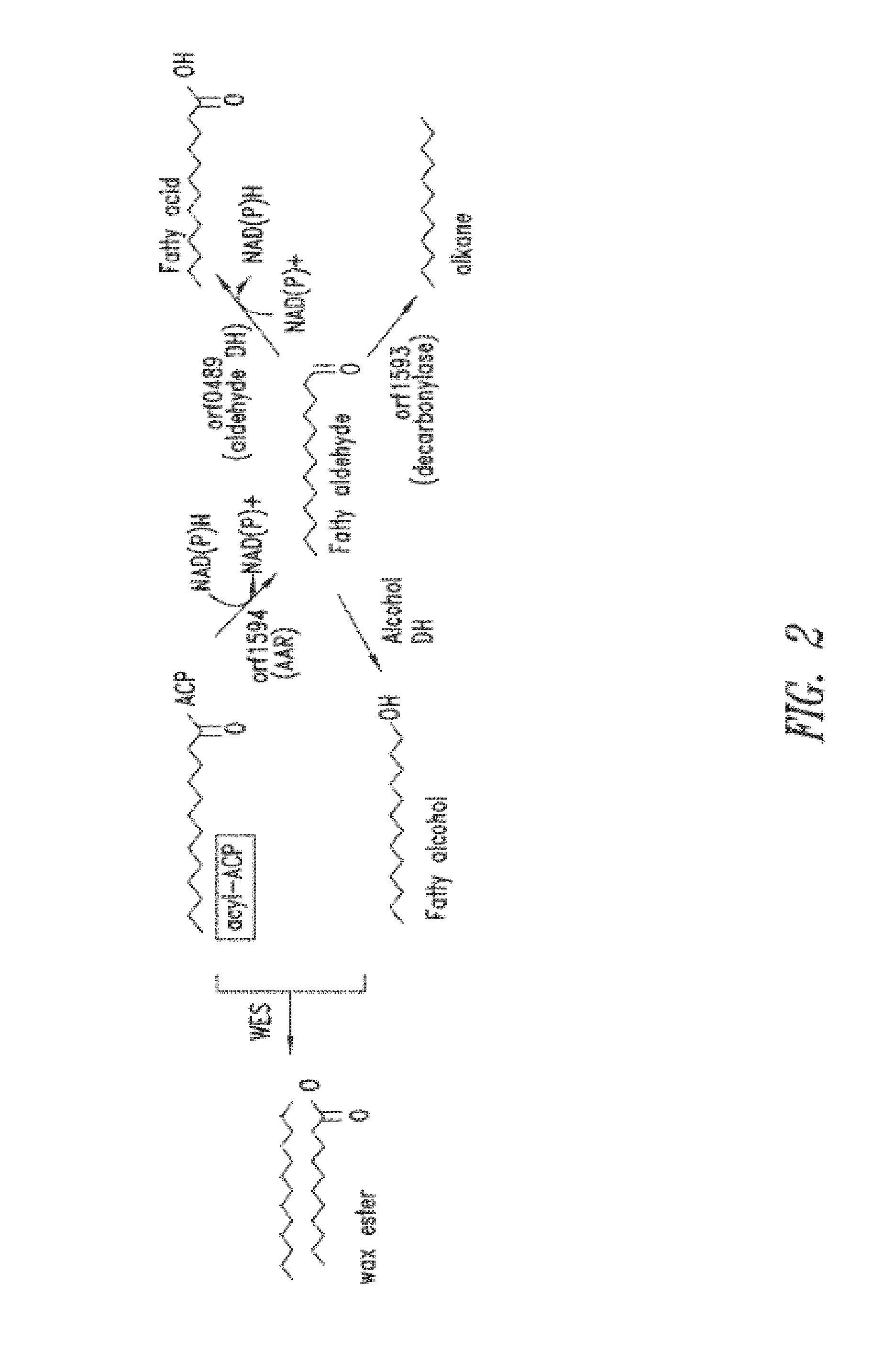Modified photosynthetic microorganisms for producing lipids
a technology of lipids and microorganisms, applied in microorganisms, biochemistry apparatus and processes, enzymes, etc., can solve the problems of inability to readily genetically manipulate algae, no triglyceride energy storage molecules, etc., to increase cell growth, increase cell growth, and increase the production of free fatty acids
- Summary
- Abstract
- Description
- Claims
- Application Information
AI Technical Summary
Benefits of technology
Problems solved by technology
Method used
Image
Examples
example 1
Overexpression of Acyl-ACP Reductase Increases Fatty Acid Production in Cyanobacteria
[0353]Overexpression of orf1594 in S. elongatus PCC7942 was performed to examine its effects on production of lipids, such as free fatty acids. S. elongatus PCC7942 was transformed with a vector containing the orf1594 sequence under the control of an IPTG-inducible promoter, with or without a vector encoding ACP. Transformed and control (wild-type) cells were then subcultured to achieve an OD750 of 0.1 the day before induction, and induced with 1 mM IPTG (0 hr). At 24 hours post-induction, 0.5 OD equivalents of whole lysate were separated by thin layer chromatography (TLC) using a mobile phase for polar lipids (70 mL chloroform / 22 mL methanol / 3 mL water). 5 μg of a palmitic acid standard was included. Samples of wild-type, uninduced orf1594, and induced orf1594 were also analyzed at 24 h and 48 hours post-induction by gas chromatography (GC) for total fatty acid methyl esters (FAMES). Quantitation o...
example 2
Aldehyde Dehydrogenase Catalyzes Fatty Acid Production in Cyanobacteria that Overexpress Acyl-ACP Reductase
[0355]To evaluate the role of endogenous aldehyde dehydrogenase (orf0489) in free fatty acid production in an acyl-ACP reductase (orf1594) overexpressing strain of Cyanobacteria, the endogenous orf0489 gene was disrupted by transposon-mediated insertional mutagenesis. The orf0489 disruption was made in both wild-type Synechococcus elongatus PCC7942 and orf1594 (NS2_trc)-overexpressing backgrounds, by introducing a cosmid with a transposon disruption of the orf0489 gene.
[0356]Four different strains were diluted to an OD750 of 0.1 the day before induction and then induced with 1 mM IPTG at t=0. One strain overexpressed acyl-ACP reductase (1594), another strain had a deletion in the aldehyde dehydrogenase gene (D0498), and two other strains overexpressed 1594 and had a deletion in orf0489 (15941D0489#1 and 15941D0489#2). Samples were collected for TLC and GC analysis 24 and 48 hr ...
example 3
Purified H6-orf0489 Utilizes Nonyl-Aldehyde as a Substrate
[0358]To directly test whether orf0489 is an aldehyde dehydrogenase, a histidine-tagged version of this protein (h6-orf0489) was overexpressed in E. coli and purified using metal affinity chromatography. The purified protein was then employed in an in vitro reaction using a fatty aldehyde as a substrate.
[0359]FIG. 4A shows the reaction scheme for measuring orf0489 aldehyde dehydrogenase activity, and FIG. 4B shows the SDS PAGE of metal affinity-purified h6-0489. The reaction was started by mixing together a fatty aldehyde substrate (nonyl-aldehyde at 1 mM), various concentrations of purified h6-orf0489 (0.3, 1.5 or 6 μM final concentration), and NAD+ or NAD(P)+ at 1 mM. The progress of the reaction was assessed by measuring the production of NAD(P)H at 340 nm using the SpectraMax M5; measurements were taken every 30 seconds for 30 minutes. FIG. 4C shows that the purified h6-orf0489 polypeptide utilizes nonyl-aldehyde as a sub...
PUM
| Property | Measurement | Unit |
|---|---|---|
| concentration | aaaaa | aaaaa |
| temperature | aaaaa | aaaaa |
| diameters | aaaaa | aaaaa |
Abstract
Description
Claims
Application Information
 Login to View More
Login to View More - R&D
- Intellectual Property
- Life Sciences
- Materials
- Tech Scout
- Unparalleled Data Quality
- Higher Quality Content
- 60% Fewer Hallucinations
Browse by: Latest US Patents, China's latest patents, Technical Efficacy Thesaurus, Application Domain, Technology Topic, Popular Technical Reports.
© 2025 PatSnap. All rights reserved.Legal|Privacy policy|Modern Slavery Act Transparency Statement|Sitemap|About US| Contact US: help@patsnap.com



